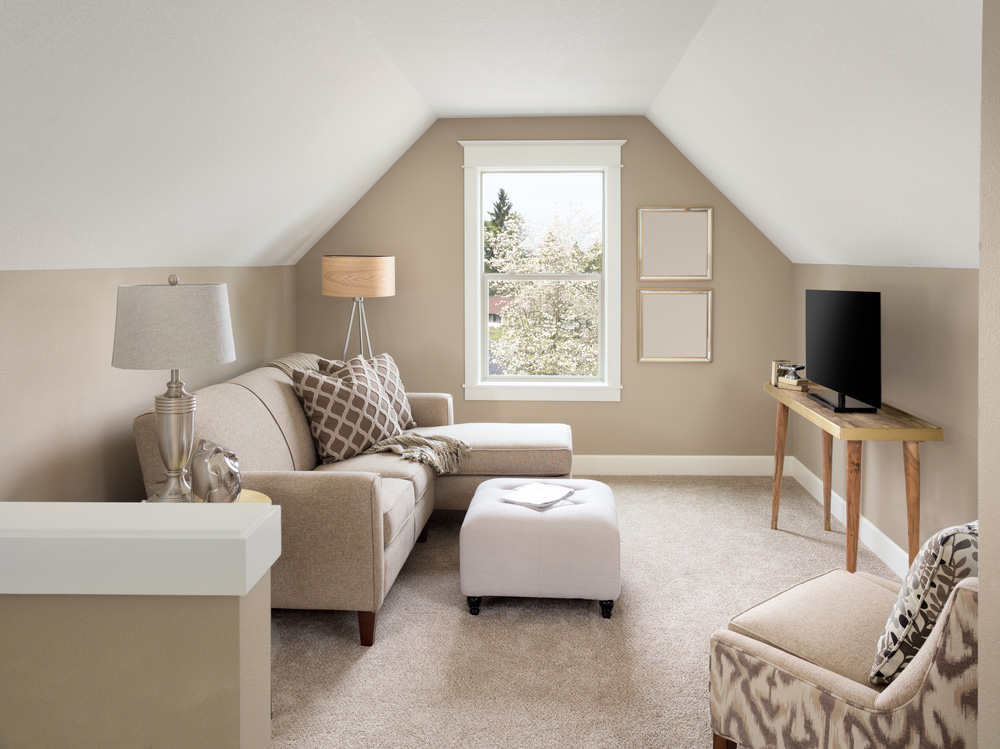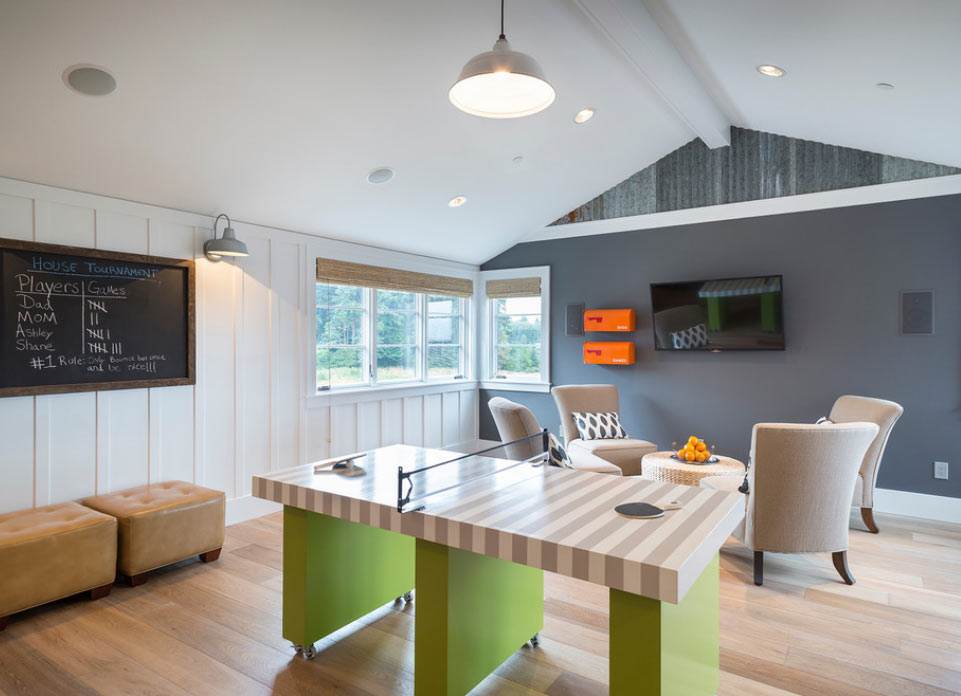To cool a bonus room above a garage, install a dedicated mini-split air conditioning system. Consider adding insulation to reduce heat transfer.
Creating a comfortable environment in a bonus room above a garage can be a challenge. These spaces often suffer from extreme temperatures, becoming too hot in summer and too cold in winter. The key to transforming this area into a livable space lies in effective temperature control.
Proper insulation plays a crucial role in minimizing heat transfer from the garage below and the roof above. Additionally, installing a mini-split air conditioning system offers a tailored solution that doesn’t require ductwork, making it efficient and cost-effective. Addressing these issues not only enhances comfort but also increases the usability of your bonus room, making it a versatile addition to your home. Keeping these strategies in mind will help ensure your bonus room is a cozy retreat year-round.
Introduction To Bonus Room Cooling Challenges
Bonus rooms above garages face unique cooling challenges. These spaces often become uncomfortably hot. Let’s explore why these rooms heat up and how to cool them efficiently.
Unique Heat Issues
Bonus rooms above garages suffer from heat build-up. These rooms sit exposed to the sun. They lack the earth’s insulating effect that lower levels enjoy. Cars below may also emit heat. This makes these rooms hotter than the rest of the house.
Importance Of Proper Insulation
Insulation is key to maintaining a comfortable temperature. Without proper insulation, heat enters in summer and escapes in winter. This leads to higher energy bills and an uncomfortable room. Ensure insulation is up to standard for better climate control.
Assessing The Situation
Before making your bonus room comfortable, understand the issue. Heat can sneak in from many sources. Good ventilation might be missing. Let’s dive in and assess your bonus room’s climate challenges.
Identifying Heat Sources
First, pinpoint where heat comes from. Your bonus room may face the sun, getting direct rays. Garage activities below can also raise temperatures. List all potential heat contributors for a complete overview.
- Sun exposure: Check windows and room orientation.
- Garage use: Consider equipment and cars below.
- Insulation: Is it sufficient or lacking?
Evaluating Current Ventilation
Proper airflow is key to a cool space. Assess current ventilation systems. Look for vents, fans, or windows. Note any blockages or dust buildup. A well-ventilated room moves hot air out efficiently.
| Ventilation Type | Status |
|---|---|
| Vents | Check for blockages or leaks. |
| Fans | Are they working and well-placed? |
| Windows | Do they open and allow airflow? |
Insulation Solutions
Keeping a bonus room above a garage cool is tricky. The right insulation makes a big difference. It keeps the space comfortable year-round. Let’s explore insulation materials and installation techniques.
Types Of Insulation Materials
Different materials suit different needs. Fiberglass batts are common and affordable. Rigid foam boards offer high R-values in thin layers. Spray foam fills gaps and cracks well. Finally, reflective insulation works by reflecting heat. Each material has its own benefits.
- Fiberglass Batts: Easy to handle, fits between studs.
- Rigid Foam Boards: Great for tight spaces, high insulation value.
- Spray Foam: Seals air leaks, high R-value.
- Reflective Insulation: Reflects heat, good for hot climates.
Installation Techniques
Proper installation is key. DIYers can handle some types. Professionals might be needed for others.
- Cut to Fit: Measure and cut insulation to size.
- Seal Gaps: Use caulk or foam to seal openings.
- Secure in Place: Use staples or adhesive to hold insulation.
- Check for Voids: Ensure no space is left uninsulated.
Fiberglass batts need careful placement. Rigid foam requires cutting precision. Spray foam must be applied evenly. A well-insulated bonus room saves energy and money.

Credit: www.extraspace.com
Air Conditioning Options
Turning your bonus room above the garage into a cool retreat during hot months is essential. Air conditioning options vary, offering efficient solutions to beat the heat. Explore the benefits and drawbacks of portable versus window AC units and ductless mini-split systems. Make the right choice for your space.
Portable Vs. Window Ac Units
Portable AC units and window AC units offer quick fixes for cooling. Let’s compare them:
- Portable AC units are easy to move. They fit in many spaces.
- They need access to a window for the exhaust hose.
- Window AC units install in a window. They save floor space.
- Window units often cool more efficiently than portable units.
Choose based on your room’s size and window layout.
Ductless Mini-split Systems
A ductless mini-split system is a permanent solution. It has two main parts:
- An outdoor compressor.
- An indoor air-handling unit.
This system is quiet and efficient. It does not block windows. Installation requires a professional but offers long-term comfort. Ideal for rooms without existing ductwork.
Ventilation Strategies
Let’s talk about making your bonus room above the garage cooler. We call these “Ventilation Strategies”. It’s all about moving air the right way.
Improving Air Flow
Good air flow keeps a room cool. Here’s how to make air move better:
- Open windows on opposite sides. This creates a breeze.
- Use fans. They push hot air out and pull cool air in.
- Clean vents often. This makes sure nothing blocks the air.
Installing Attic Vents
Attic vents help a lot. They let hot air escape from the top of your house. Here are types you can install:
| Type | Benefit |
|---|---|
| Static Vents | Simple and effective |
| Turbine Vents | Spin to pull hot air out |
| Ridge Vents | Hide along the roof peak |
Remember, vents need clear paths. Make sure insulation doesn’t block them.
Radiant Barriers
Keeping a bonus room above a garage cool can be a challenge. Radiant barriers are an effective solution. These barriers reflect heat, keeping spaces cooler.
Benefits Of Radiant Barriers
Installing radiant barriers offers several benefits:
- Lower energy bills: They reflect heat, reducing cooling costs.
- Improved comfort: They keep bonus rooms at a stable temperature.
- Easy to combine: They work with other insulation types.
Installation Process
The installation process involves a few key steps:
- Measure: Determine the space size for the barriers.
- Cut: Trim the barrier material to fit the space.
- Attach: Secure the barriers to the roof rafters.
- Seal: Ensure there are no gaps for optimal performance.
With the right tools and instructions, DIY installation is possible.
Window Treatments And Sealing
Bonus rooms above garages often face extreme temperatures. Proper insulation is vital. Window treatments and sealing can significantly reduce heat gain in summer. They also keep warmth during winter. This section will guide on two effective methods.
Using Reflective Window Films
Reflective window films act as a barrier against sunlight. They prevent heat from entering the room. These films are easy to apply and come in various shades. They allow light while blocking UV rays and heat.
- Reduce glare and improve comfort.
- Lower energy bills by minimizing AC use.
- Simple to install on existing windows.
Weatherstripping And Caulking
Sealing gaps in windows and doors is essential. Weatherstripping and caulking are two methods. They prevent air leaks. Properly sealed windows enhance energy efficiency.
| Sealing Method | Benefits |
|---|---|
| Weatherstripping | Stops drafts around movable components like window sashes. |
| Caulking | Fills cracks and gaps in stationary parts, like window frames. |
- Choose the right materials for your climate.
- Apply around windows and door frames.
- Check and replace as needed over time.
Alternative Cooling Methods
Getting your bonus room above the garage cool can be a challenge. Traditional air conditioning might not be enough. Let’s look at some smart, energy-efficient ways to beat the heat.
Ceiling Fans
Ceiling fans are a simple solution. They create a breeze. This makes the room feel cooler. They use less energy than air conditioners. Make sure the fan rotates counterclockwise. This pushes cool air down. Install fans with large blades. They move more air. Ceiling fans also add to room decor.
Evaporative Coolers
Evaporative coolers, or swamp coolers, are great for dry climates. They add moisture to the air. This helps cool the room. They cost less to run than air conditioners. They also use water to cool the air. This makes them eco-friendly. Place them near a window for best results.
Maintaining A Comfortable Climate
Keeping a bonus room above a garage cool can be tricky. It’s often the hottest part of the house in summer. Yet, a comfortable climate in this space can make it a pleasant retreat. Here are some effective ways to maintain a consistent temperature.
Regular Maintenance Tips
Regular maintenance is key for a cool bonus room. Follow these tips:
- Check insulation – Ensure it’s up to par.
- Seal gaps – Stop warm air from entering.
- Clean vents – Allow free airflow.
- Inspect ductwork – Fix leaks promptly.
Monitoring Temperature And Humidity
Temperature and humidity affect comfort. Use these strategies:
| Tool | Function |
|---|---|
| Thermostat | Tracks temperature |
| Hygrometer | Measures humidity |
Monitor readings daily. Adjust systems as needed.

Credit: plankandpillow.com
Cost Considerations
Understanding the costs involved in cooling a bonus room above a garage is key. Homeowners often face high temperatures in these spaces. The right upgrades ensure comfort without breaking the bank. Let’s explore cost-effective solutions.
Budgeting For Upgrades
Start with a clear budget. Cooling solutions range from simple fans to complex HVAC systems. Costs vary based on room size and chosen method. Include installation fees in the budget. Consider long-term maintenance costs too. Research different cooling systems. Compare prices before making a decision.
Energy Efficiency Savings
Energy-efficient upgrades can lead to savings. Insulation cuts cooling costs. It keeps cool air in during summer. Energy-saving windows also help. They block heat from entering. Efficient HVAC systems use less energy. This reduces utility bills over time. Look for products with the ENERGY STAR label. They meet strict energy efficiency guidelines. Rebates and tax credits might be available. Check local programs for potential savings.
Keywords: cooling a bonus room, high temperatures, cost-effective solutions, clear budget, installation fees, long-term maintenance, energy-efficient upgrades, insulation, energy-saving windows, ENERGY STAR label, rebates, tax credits.

Credit: citysoulsouthernheart.com
Frequently Asked Questions
Why Is My Bonus Room So Hot?
The bonus room above a garage often lacks proper insulation and ventilation, leading to heat accumulation. Improving air flow and adding insulation can significantly reduce the temperature.
What Insulation Works Best For Bonus Rooms?
Fiberglass or spray foam insulation are excellent choices for bonus rooms due to their high R-values and ability to fit into irregular spaces, ensuring a well-insulated environment.
Can Ceiling Fans Cool My Bonus Room?
Yes, ceiling fans improve air circulation and create a breeze, making the bonus room feel cooler and more comfortable during warmer months.
How Does A Mini-split System Benefit Bonus Rooms?
Mini-split systems offer efficient cooling and heating, with the advantage of being ductless, making them ideal for bonus rooms without existing ductwork.
Are Attic Vents Effective For Cooling?
Attic vents help expel hot air, reducing the overall temperature in the bonus room. Proper ventilation is crucial for maintaining a cooler space above a garage.
Conclusion
Transforming your bonus room above the garage into a cool retreat is within reach. Remember to insulate, ventilate, and choose the right air conditioning options. With these steps, your once stuffy space can become a comfortable haven for work or relaxation.
Embrace the change and enjoy your newly cooled bonus room.




